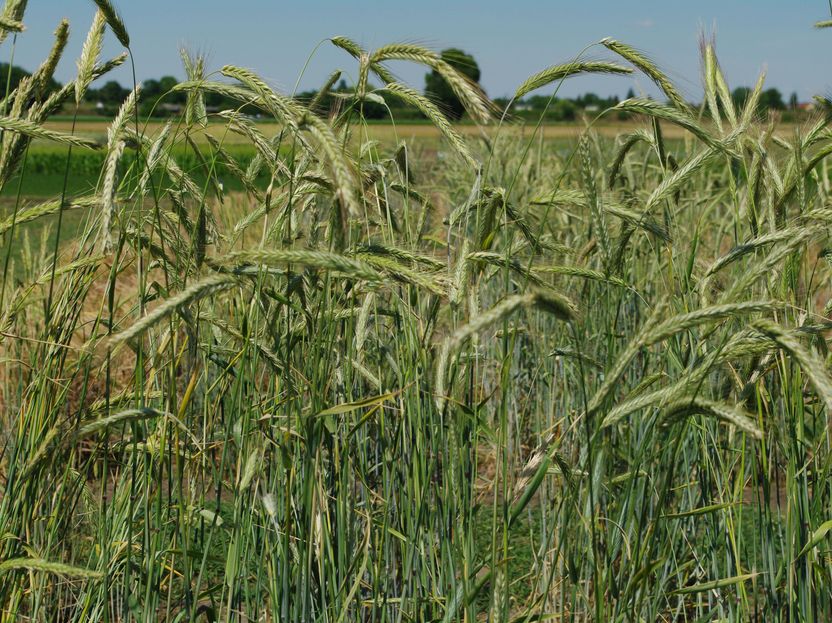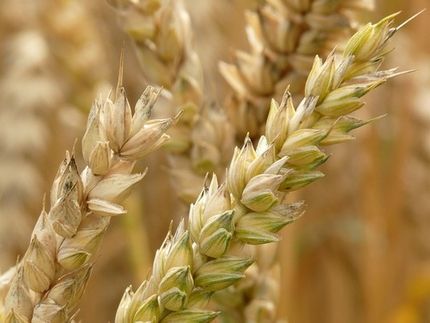A history of rye: How early farmers made plants genetically less flexible
Advertisement
Over the course of many thousands of years, humans turned rye into a cultivated plant. In doing so, they have considerably limited its genetic flexibility. Today, wild rye not only has a more diverse genetic make-up, it is able to recombine this more freely than its domesticated cousins. A research team led by Martin Luther University Halle-Wittenberg (MLU) and the Leibniz Institute of Plant genetics and Crop Plant Research (IPK) has demonstrated this in a new study published in the scientific journal "Molecular Biology and Evolution". The results also explain why cultivated rye is less resistant than wild species to developments such as climate change.

Uni Halle / Steven Dreissig
In their study, the team investigated various properties and the genetic material of 916 wild and domesticated rye plants from different regions in Europe and Asia. They were particularly interested in the so-called recombining regions of rye. In essence, this describes how often the genetic material within a plant mixes along a chromosome during cell division. "The process of recombination plays an important role in a species’ evolution because it enables two beneficial gene variants to combine," explains Dr Steven Dreissig from MLU. At the same time, useful variants can also be separated from ones that are less beneficial. The larger the recombination landscape, the more plants are able to flexibly recombine their genetic material.
For early farmers, however, this process was disadvantageous: agriculture relies on uniform plants with more or less there the same properties and the same genetic material. In the case of rye, says Dreissig, the situation is aggravated by the fact that the plants depend on cross-pollination; unlike barley or wheat, they are unable to self-pollinate. "Rye pollen can travel up to several kilometres. This allows populations that are separated spatially to remain in contact and exchange genetic material," says Dreissig.
People started growing cereals, such as barley or wheat, around 12,000 years ago. Most of the varieties established today originated in the Fertile Crescent region of the Middle East. "Rye is assumed to have first spread to Europe as a weed and could only be domesticated there much later because there were no disturbing wild varieties," says Dr Martin Mascher from IPK, who is also a member of the German Centre for Integrative Biodiversity Research (iDiv) Halle-Jena-Leipzig.
Their new analyses have allowed the researchers to reconstruct the distribution of rye and recreate a kinship network from Asia to Central Europe. The wider the distance between the individual locations, the greater the differences in the recombination landscape of the plants. "We actually found major differences between domesticated and wild rye, especially in the non-recombining regions. In cultivated rye, the recombining regions are significantly smaller than in the weed-like plants, such as those still found today in Turkey," says Dreissig. This is advantageous for cultivated plants because it makes plants with desirable properties, for example firm ears and large grains, more uniform and controllable. Wild rye, on the other hand, benefits from this genetic flexibility, which allows it to react better to disturbance factors, such as a changing climate.
The team also identified a gene region that appears to play a major role in the flexibility of the genetic material. In doing so, they also found a gene that was already known to influence recombining regions in yeast.
The study was funded by the Deutsche Forschungsgemeinschaft (German Research Foundation, DFG) and the Federal Ministry of Education and Research (BMBF).






















































